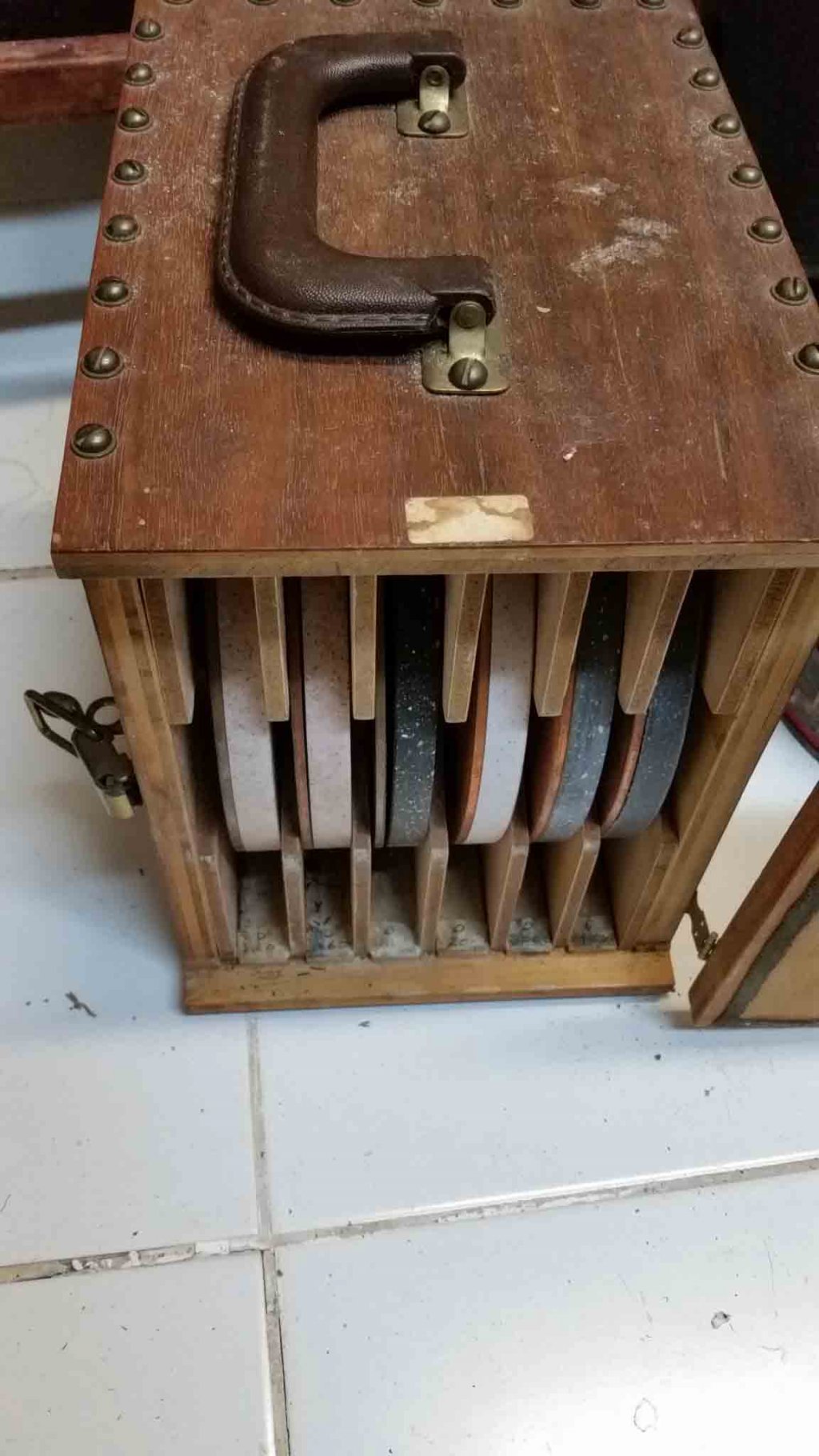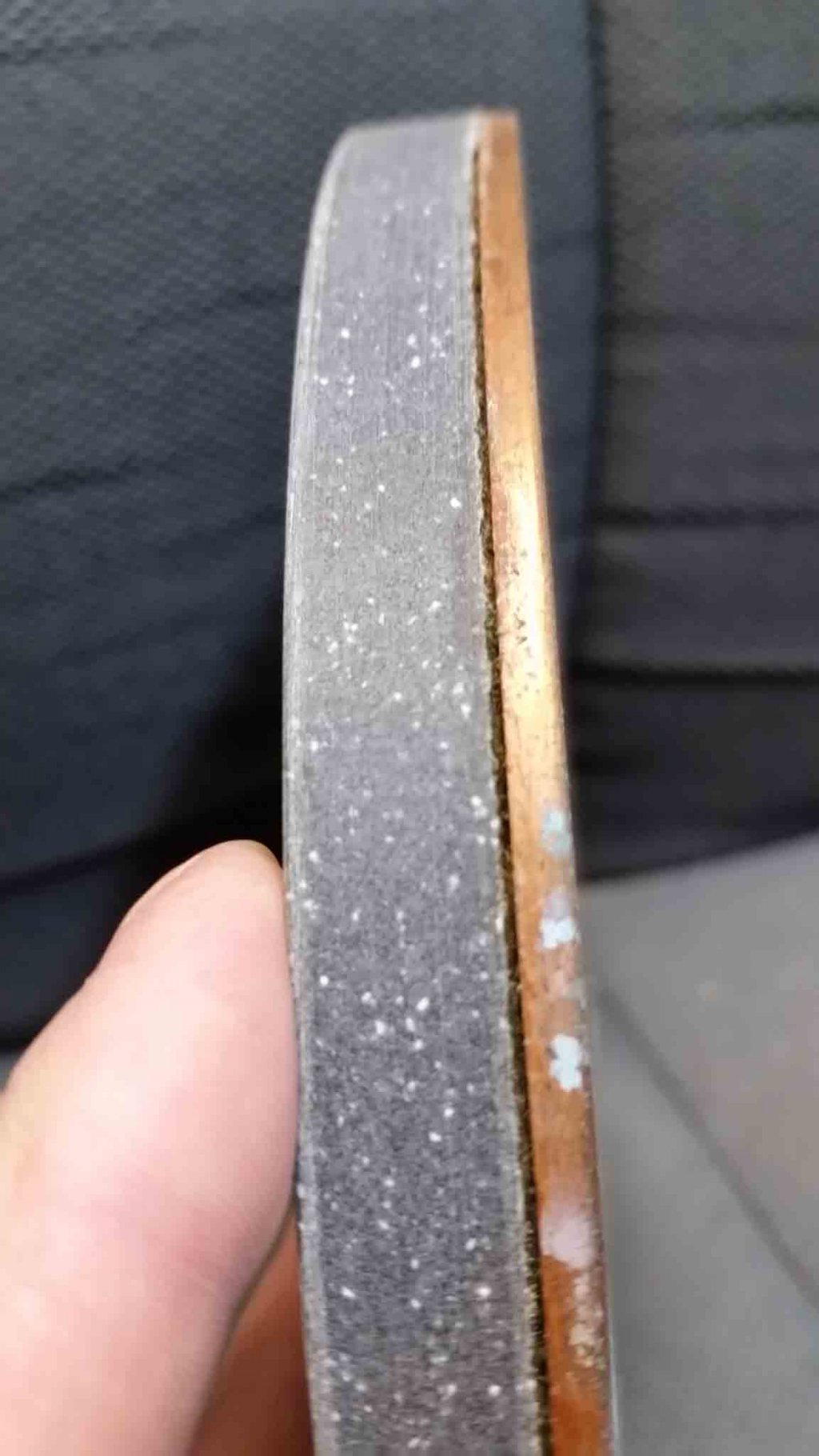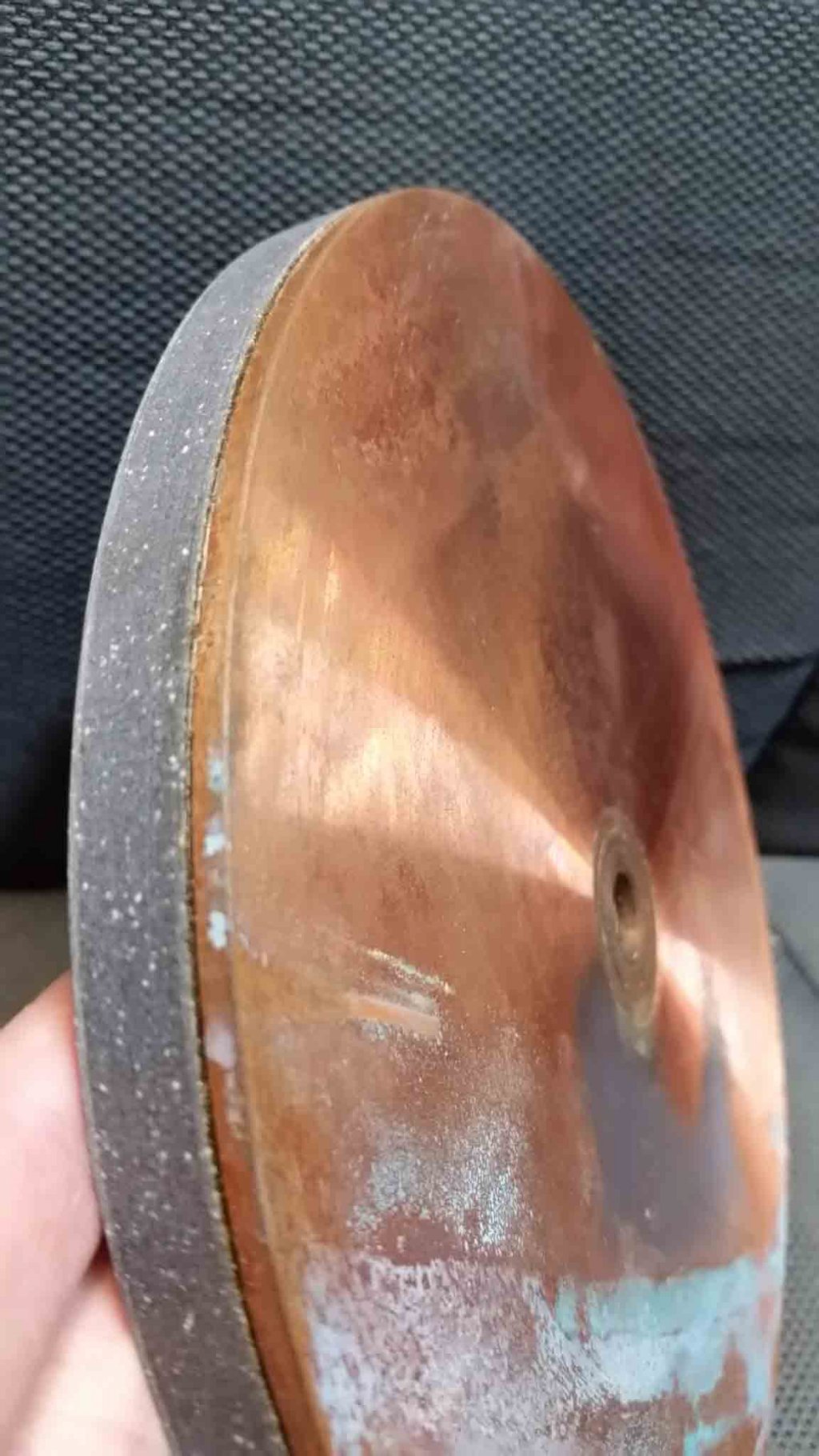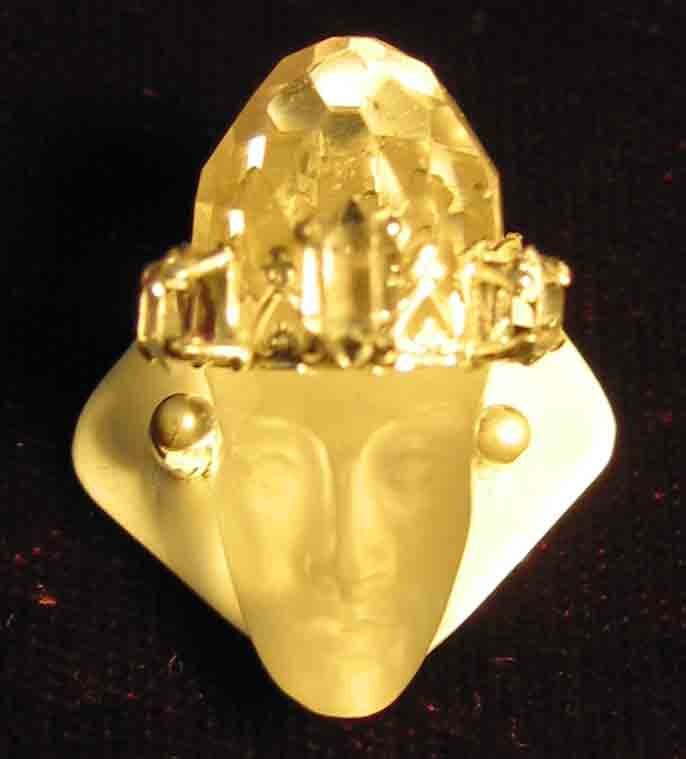- Joined
- Jul 15, 2017
- Messages
- 42
- Reaction score
- 41
Hello all:
I'm new here, and I'm primarily a gemstone carver. I've recently started faceting and today received a set of 6 copper topped, corian backed laps. They're marked 180, 260, 600, 1200, 3000, 14000. The man who gave them to me said they've never been used, but they look like they may have been. It appears that they have at least been charged.
Is there a way to clean these? I doubt that there is, but thought I might as well ask. I'm a little spooked about cross-contamination but I guess the only way to find out is to try cutting a stone. I've been reading about how to charge these, but to tell you the truth, I can't afford the brayer right now. Can a brayer be cleaned and used on other grits? I have some tool steel and access to a lathe so I can make one if it's necessary. How often will I need to recharge and with approximated how much diamond?
I have plenty of diamond powder in a large variety of grit. I've been using plated laps up to 1000, and after that using 1200, 3000, 8000 and cerium on corian laps that I made myself. I put turtle wax on them and then smear some diamond grit and work it in with a agate burnisher. I've been cutting quartz to learn on before moving over to more expensive rough. I have found that the turtle wax only holds up to facet one stone, after that it needs to be redone.
I've been reading about copper laps, and one site said that you use water up to 1200, and oil on 3000 and above. Is this what you guys do? There also seems to be a debate about what kind of oil or grease: almond oil, synthetic lube with teflon, etc... to tell you the truth, I'm confused. Should I aggressively clean these things after using them, or just rinse them with water? I only use water to clean the corian laps; maybe this is why I have a few mystery scratches occasionally.
My machine is an ancient Graves Mark I. It has one speed and one direction and a 64 index. It's one step up from a jamb-peg faceter. It's cranky and inaccurate, but it's what I have. I've replaced the bearing, belt and switch. It's an adventure every time I facet a stone; nothing stays level. I'm just grateful to have it, and a friend lent me a 96 index a few days ago, and I'm looking forward to being able to cut some different stones.
Sorry for all the questions, it's hell being a newbie.
Debbie K
I'm new here, and I'm primarily a gemstone carver. I've recently started faceting and today received a set of 6 copper topped, corian backed laps. They're marked 180, 260, 600, 1200, 3000, 14000. The man who gave them to me said they've never been used, but they look like they may have been. It appears that they have at least been charged.
Is there a way to clean these? I doubt that there is, but thought I might as well ask. I'm a little spooked about cross-contamination but I guess the only way to find out is to try cutting a stone. I've been reading about how to charge these, but to tell you the truth, I can't afford the brayer right now. Can a brayer be cleaned and used on other grits? I have some tool steel and access to a lathe so I can make one if it's necessary. How often will I need to recharge and with approximated how much diamond?
I have plenty of diamond powder in a large variety of grit. I've been using plated laps up to 1000, and after that using 1200, 3000, 8000 and cerium on corian laps that I made myself. I put turtle wax on them and then smear some diamond grit and work it in with a agate burnisher. I've been cutting quartz to learn on before moving over to more expensive rough. I have found that the turtle wax only holds up to facet one stone, after that it needs to be redone.
I've been reading about copper laps, and one site said that you use water up to 1200, and oil on 3000 and above. Is this what you guys do? There also seems to be a debate about what kind of oil or grease: almond oil, synthetic lube with teflon, etc... to tell you the truth, I'm confused. Should I aggressively clean these things after using them, or just rinse them with water? I only use water to clean the corian laps; maybe this is why I have a few mystery scratches occasionally.
My machine is an ancient Graves Mark I. It has one speed and one direction and a 64 index. It's one step up from a jamb-peg faceter. It's cranky and inaccurate, but it's what I have. I've replaced the bearing, belt and switch. It's an adventure every time I facet a stone; nothing stays level. I'm just grateful to have it, and a friend lent me a 96 index a few days ago, and I'm looking forward to being able to cut some different stones.
Sorry for all the questions, it's hell being a newbie.
Debbie K







